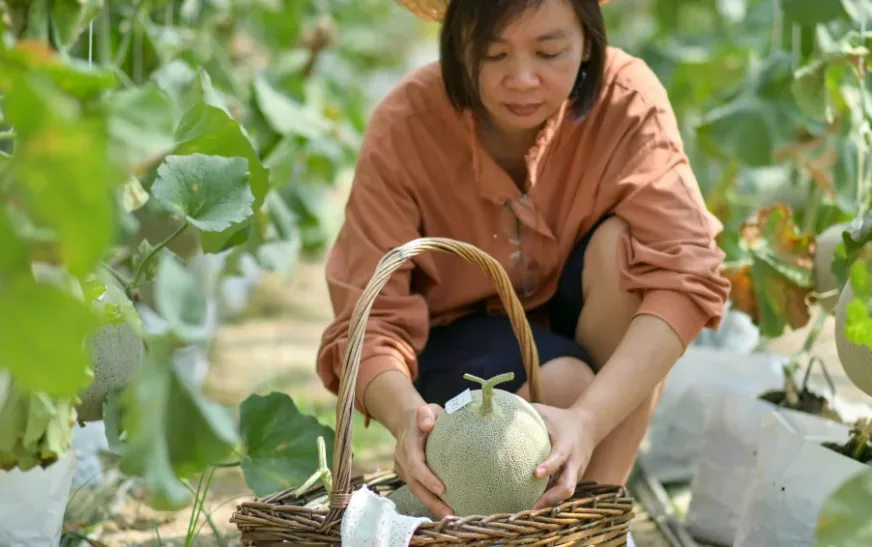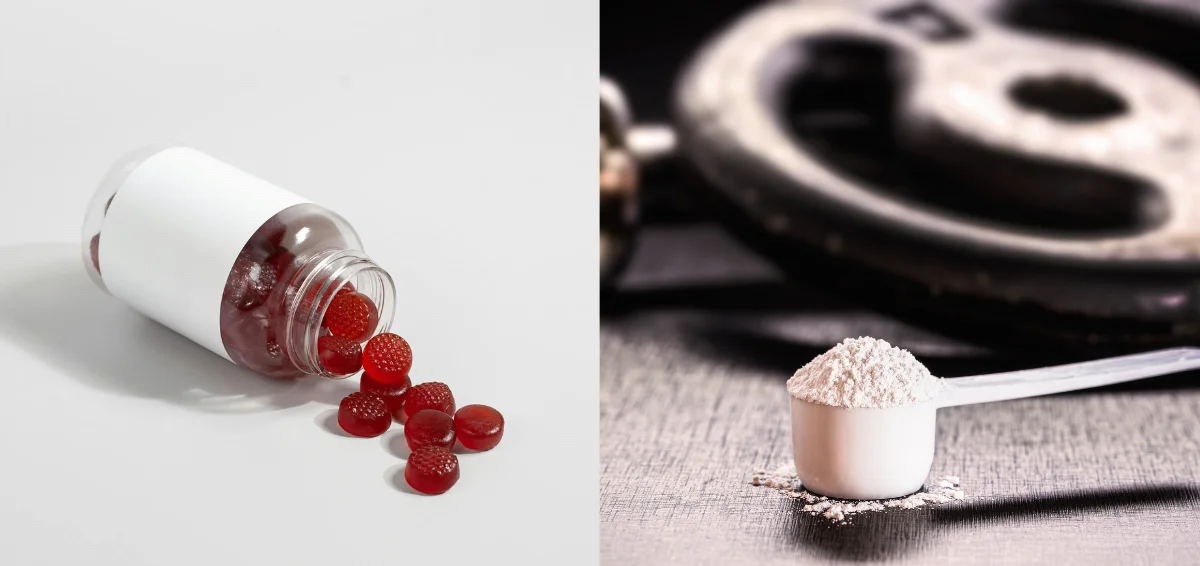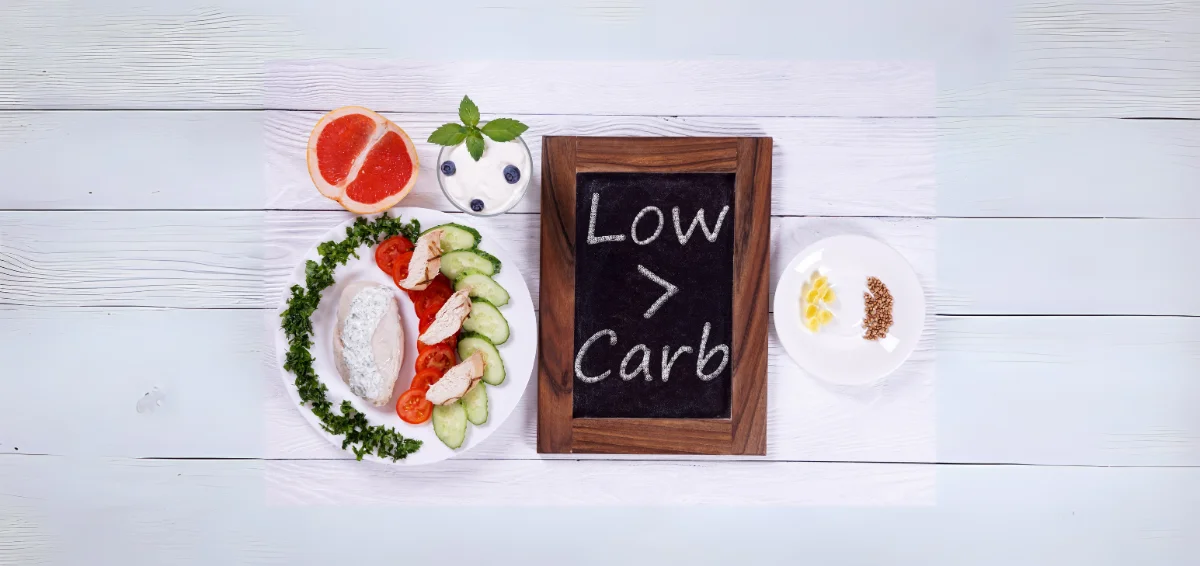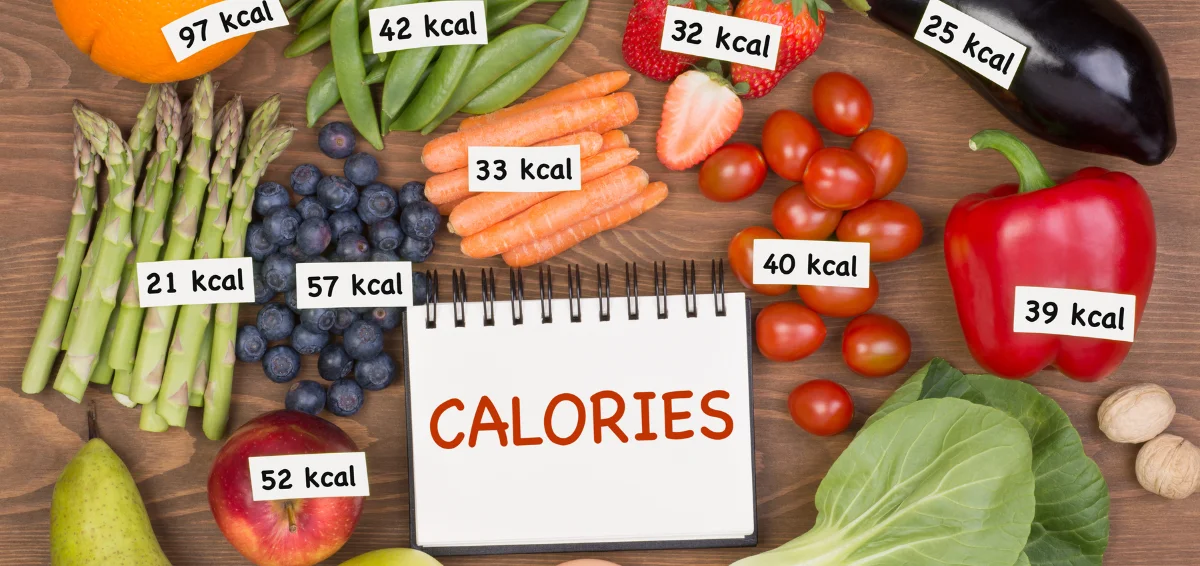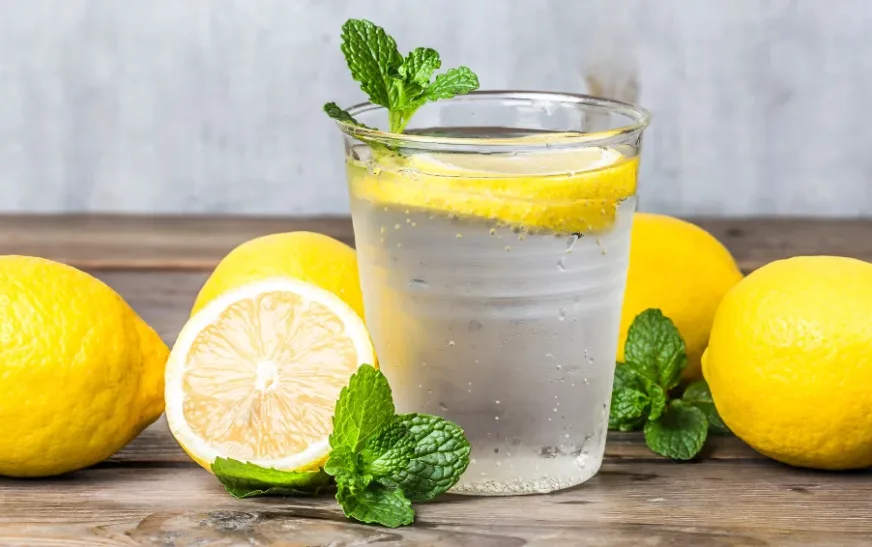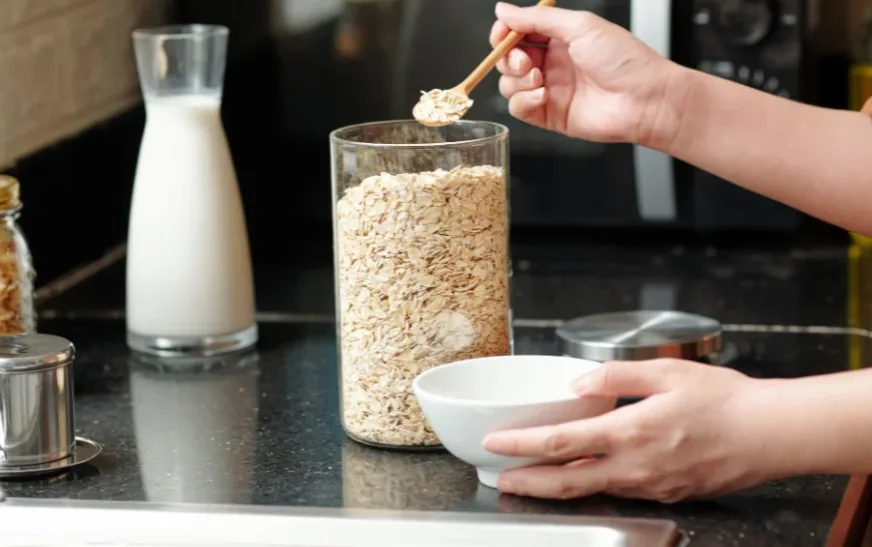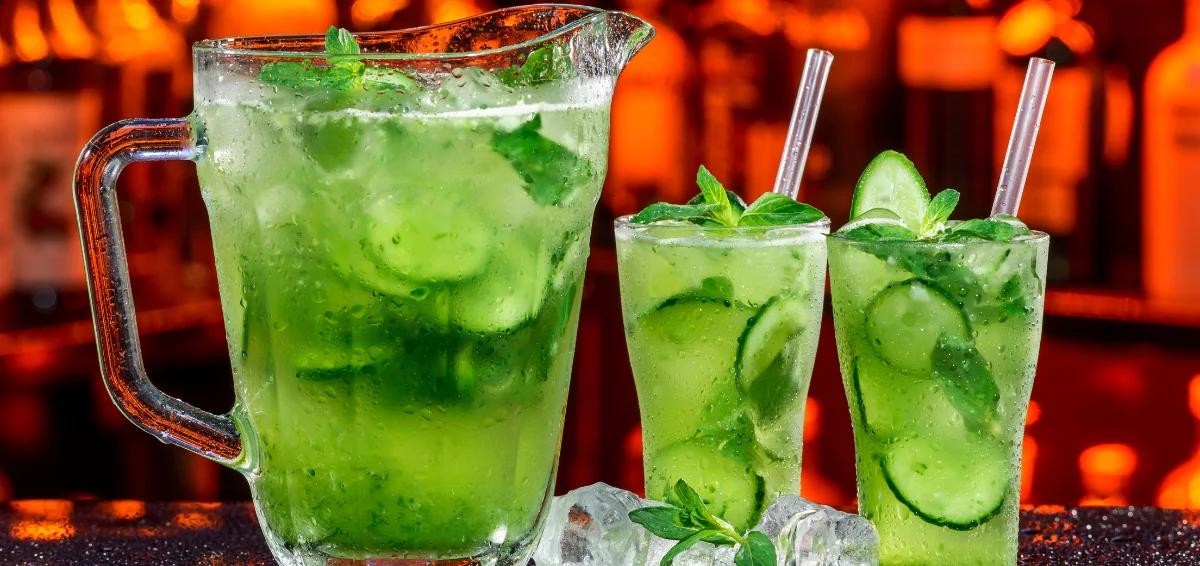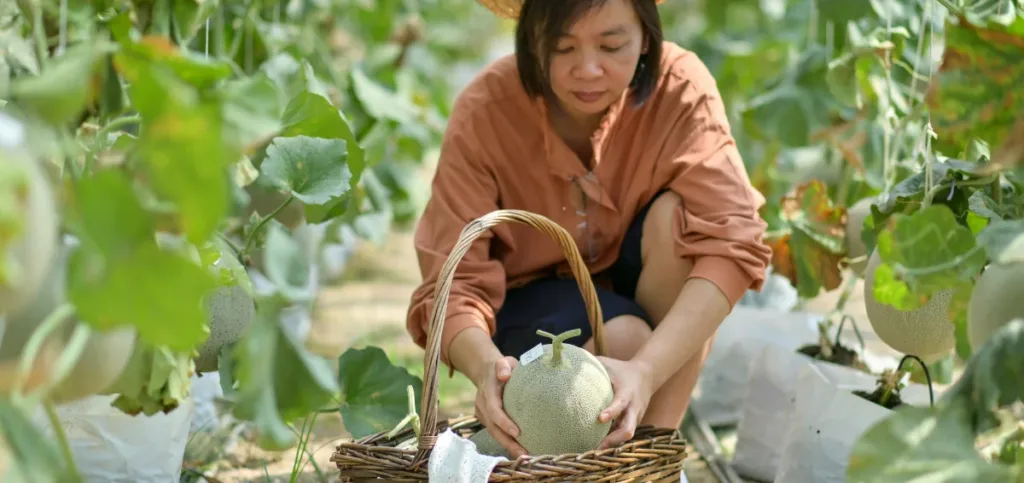
You’re at the grocery store or farmer’s market, standing in front of a big pile of cantaloupes. Some are soft and are hard. A few smell sweet. Others, not so much. You want the perfect one, but how do you choose it?
If you’ve ever felt confused about how to pick a good cantaloupe, you’re not alone. This guide breaks it all down. You’ll learn what to look for, feel for, and even smell. Let’s make sure your next melon is bursting with flavor.
Why Choosing the Right Cantaloupe Matters
Cantaloupes don’t ripen much after harvest. That means your first choice is everything. Pick a good one, and you get a juicy, sweet fruit that’s perfect for breakfast or smoothies. Pick wrong, and you’re stuck with a tasteless or mushy disappointment.
The best part is that it only takes a few quick checks. Learning how to pick a good cantaloupe means less waste and better eating. Plus, you’ll impress your family or friends at your next summer picnic.
The Look Test: How A Cantaloupe Should Appear
Start with your eyes. A ripe cantaloupe has a tan or creamy golden background color. This background, also called the “under-skin,” should peek out beneath the rough, netted surface.
It is best to avoid green or grayish tones. They signal that the fruit isn’t ripe yet. Also, check that the netting (the webbed pattern) is raised and well-defined. Usually, this texture means the melon had time to mature properly.
Finally, avoid any melons with cracks, bruises, or large soft spots. These could mean the fruit is damaged or rotting inside. So, you should avoid these as they can harm your health and waste your money.
The Feel Test: Texture And Weight
Next, it is time to use your hands. Pick up the cantaloupe and hold it gently. It should feel firm, but not rock hard. If it’s too soft, it’s probably overripe. If it feels hollow or super light, it might be dry inside.
Now weigh it in your hand. A good cantaloupe should feel heavy for its size. That weight means it’s full of juice, and it is a sure sign of ripeness.
Give it a gentle press on the blossom end, which is opposite to the stem. A little bit of give is a good sign, but it shouldn’t feel mushy. If it feels mushy, then there is a high chance that the cantaloupe has gone bad from the inside.
Must Read: Is Guacamole Healthy?
The Smell Test: Checking For Ripeness
The nose knows! One of the best ways to figure out how to pick a good cantaloupe is by giving it a sniff.
Bring the stem end of the melon up to your nose. A ripe cantaloupe should have a sweet, slightly floral aroma. If there’s no smell, the fruit likely isn’t ripe yet. It will be bland without any natural flavor or sweetness. If the scent is strong or sour, the melon may be overripe or starting to ferment.
This method works best when the melon is at room temperature. You have to keep in mind that cold melons often hide their scent.
Listen Closely: The Tap Test
This is one of those old-school techniques that works. Tap the cantaloupe gently with your knuckles and listen.
A ripe cantaloupe makes a deep, hollow sound. It’s a bit like tapping a drum. If the sound is dull or flat, the melon may be underripe or dried out inside.
While it’s not foolproof, combining the tap test with the smell and feel test gives you a pretty reliable verdict.
Stem or No Stem? What That Tells You
Take a look at where the stem was attached. A good cantaloupe will usually have a smooth, slightly concave scar. This means that it separated naturally from the vine, likely when it was ripe.
If there’s a bit of the stem still stuck to the fruit, that could signal it was picked too early. Those melons might not be as sweet or juicy.
Some people avoid melons with any stem remnants altogether. While not always a deal-breaker, a clean scar is often a better sign of ripeness.
Color Clues: Understanding Skin and Netting
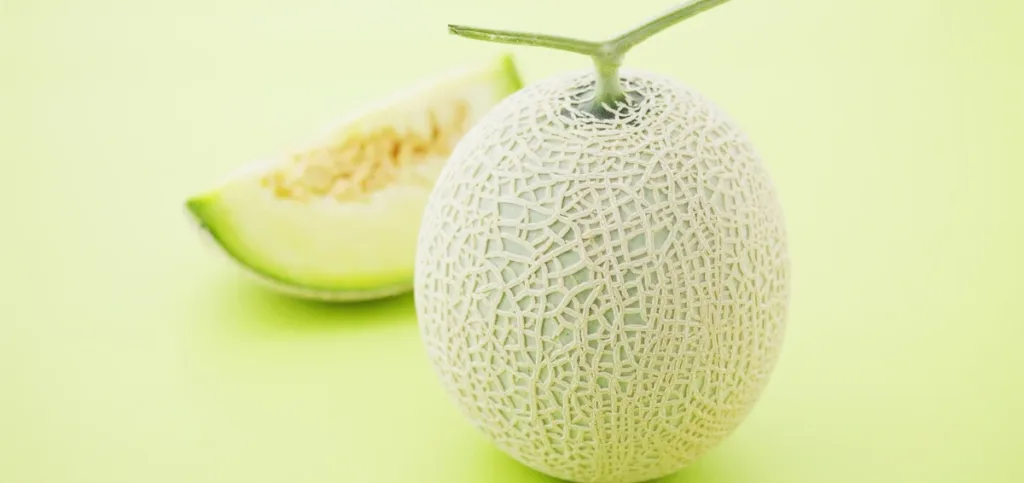
You already looked at the skin color, but what about the details?
Ripe cantaloupes usually have beige netting that stands out clearly from the skin beneath. If the netting is flat, faint, or missing in areas, the melon may have been picked too early.
Avoid cantaloupes with a greenish or overly bright yellow hue. These may look fresh, but they often lack sweetness. You want a soft, golden glow beneath the netting. It should not be pale or neon.
Time of Year: When Cantaloupes Are At Their Best
Cantaloupes are best during their natural harvest season, which is usually late spring through summer. In the U.S., that means May to August.
During peak months, cantaloupes are more likely to be ripe, fresh, and grown locally. Outside of this window, melons may be imported or picked early for shipping, which affects flavor and texture.
How to Store a Cantaloupe After Picking
So you’ve found the perfect melon. Now what? If the cantaloupe feels ripe and smells sweet, store it in the refrigerator. Cold temperatures slow down ripening and help preserve freshness. Wrap it in plastic or place it in a sealed container if it’s already cut.
If your melon isn’t quite ready yet, let it sit at room temperature for a day or two. Just keep in mind that cantaloupes don’t improve much once harvested.
Never leave cut melon out for long, as the bacteria grow fast at room temperature.
Mistakes to Avoid When Picking Cantaloupe
Even seasoned shoppers make errors. Here are a few pitfalls to skip:
- Do not rely on just one method. Combine smell, weight, and feel.
- Avoid melons with visible mold, especially near the stem.
- Do not squeeze too hard. Cantaloupes bruise easily.
- Do not pick a melon just because it looks “perfect.” Ripeness matters more than shape.
- Never choose based only on color. Check its texture and scent.
Learning how to pick a good cantaloupe also means learning what not to do.
Must Read: High Protein Oatmeal
Common Myths About Picking Cantaloupe
Let us clear up some common misconceptions:
Myth 1: Green Cantaloupes Will Ripen At Home
Many believe that cantaloupes continue to ripen on the counter like bananas. This is false. Once harvested, they cease to develop sweetness. Leaving a green melon out won’t help. You will end up with a bland, disappointing fruit that never develops a juicy or flavorful texture.
Myth 2: All Ripe Cantaloupes Smell Sweet
Some shoppers pass on melons that don’t smell strong. However, ripe cantaloupes stored cold might not release a lot of aroma right away. Give them time at room temperature, and the fragrance often returns. Don’t rule out a melon just because it isn’t overpowering.
Myth 3: Soft Spots Mean The Melon Is Ripe
Soft spots are not a sign of ripeness. Usually, they indicate overripeness or spoilage. The area may be mushy or rotten inside. A good cantaloupe should be firm all over, with just a little give at the blossom end only.
The Final Verdict
Now you know the way to pick the right cantaloupe. It takes a little time to check for smell, feel, weight, and other aspects of the fruit.
A ripe cantaloupe is sweet and juicy, which gives a refreshing feeling. On the other hand, the unripe one will be bland. You deserve better. So next time you are at the store, use these expert tips and trust your senses. Your taste buds will thank you.

